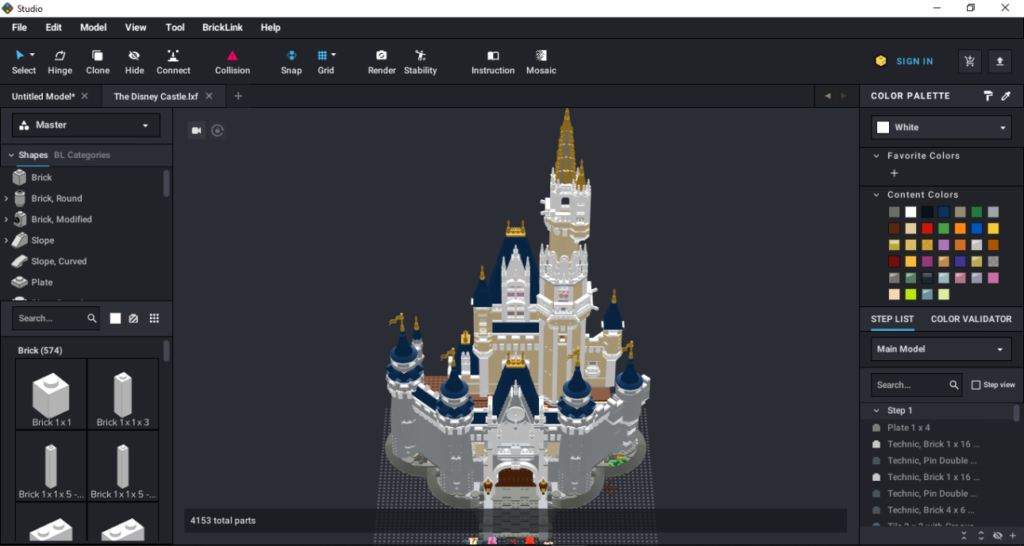Learning BIM early concepts using Lego
LEGO is a physical building toy that uses a set of pieces that fit together and that allow players to build houses (Figure 4), cars and planes, among other types of constructions, in a reduced scale for children (or adults) to play with and, at the same time as well as to gain multiple physical skills. The constructive principle and the 3D model are native in the LEGO toy. This is possible to see in the LEGO building instructions type (Figure 5).


An article on the https://graphisoft.com/ website about “Open BIM Exercise Gives Hands-On Education” explains a “BIM Lego Experience” created as part of the BIM Education program. In the experience the participants have 2D models instructions and Legos as their materials. Later, the participants received BIM files in an IFC format using individual “color” files. With this, the participants realise the power of BIM to help reducing errors and also how difficult it can be to build a project from traditional 2D printed drawings.
Another experience of approaching LEGO to the BIM concept is presented by Huang (2020). A LEGO house was adjusted and converted into a BIM model and a set of 2D construction drawings of the LEGO house was generated for a comparison between the traditional 2D approach and the BIM. Students started the experience using only the 2D models. Later, using Navisworks, they completed the LEGO house with the help of BIM and compared the difference of the methodology.
Nowadays, in the digital field, LEGO also provides a recent 3D building software called “BrickLink Studio” available at www.bricklink.com which replaces “LEGO Digital Designer” which is still available at www.lego.com/en-us/ldd. The software enables people to build, render, and create instructions with virtual LEGO bricks. Figure 6 shows an example of the Disney castle designed with LEGO pieces on studio 2.0.

In conclusion, LEGO concept and software can also allow an introductory learning to the BIM concept using gamification. The use of LEGO elements that youngsters can recognize seems to be an effective method for learning the BIM concept.
References
Hosseini et al., BIM Teaching and Learning Handbook – Implementation for Students and Educators, Routledge, London, 2021 DOI: https://doi.org/10.1201/9780367855192
Lo et al., BIM-Gamification, Presentation at Construction Industry Council, Vocational Training Council, Hong Kong Institute of Building Information Modelling, 2014
Websites
